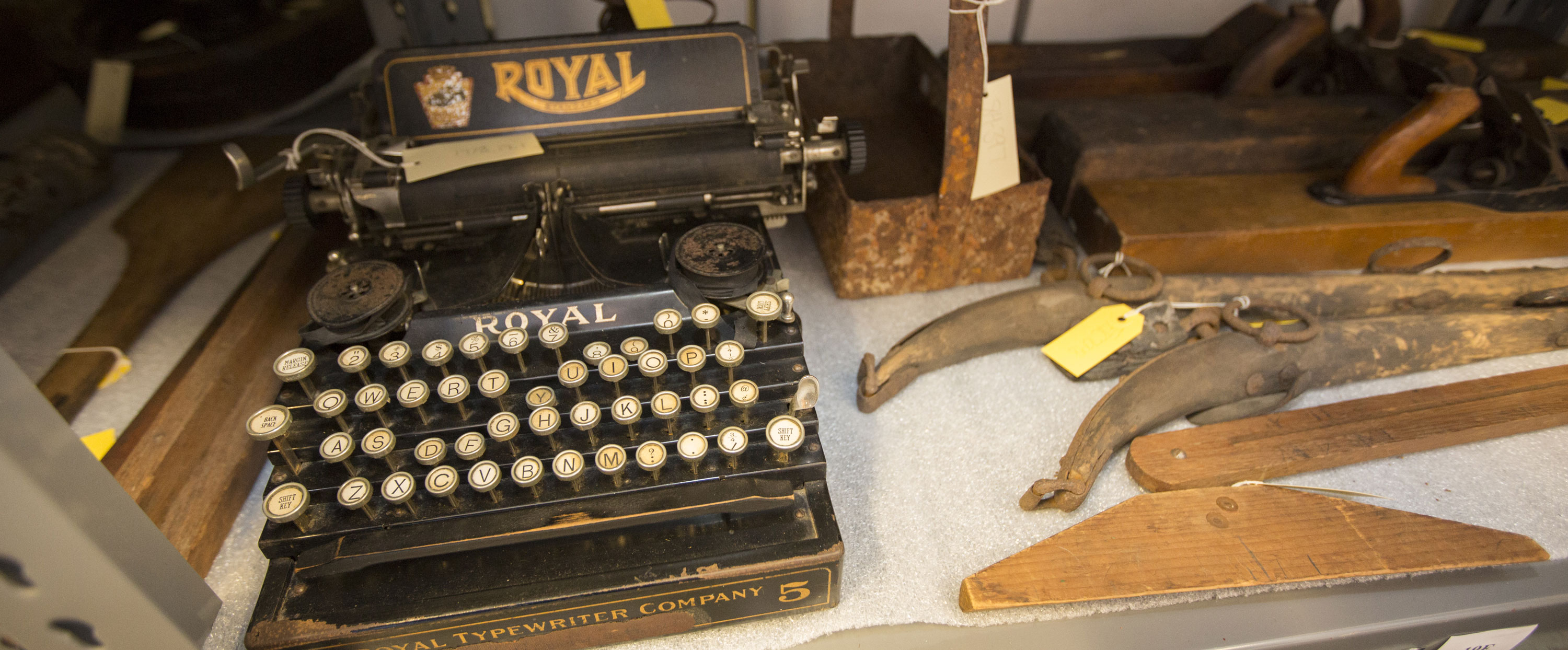Signs are everywhere. They are out there in our daily lives pulling us in, telling stories, directing us places, and can sometimes transcend their function to be an icon of local culture. Recently out for a glamorous night at the Captain’s Ball, the Busy Bee Café neon sign grabbed the spotlight. One of the largest and most technical objects in the collection, the sign’s style and connection to a longtime and beloved restaurant makes it an artifact of what it means to be “Dubuque.”
“…the Busy Bee had more followers than Dubuque has fish flies in summertime.” – Then & Now Dubuque, Iowa.
As an object of Dubuque, the Busy Bee Café located on Central Avenue between 20th and 19th Streets was a popular diner that had everything from “the best milkshakes in town,” to “a must-stop for fries with cherry or chocolate coke”, and something good and delicious like “salmon loaf mashed potatoes with gravy and peas.” These quotes come directly from Dubuquers today who still remember moments made at the Café decades ago. The Busy Bee operated through various owners from 1915 through 1998. Possibly its longest employee was George Arvanitis who began as a busboy before becoming cook and owner until its closure.
As an object of its time, the Busy Bee Café sign represents the heyday of neon advertising that peaked in popularity from the 1940s-1950s. Whether big or small, cities across the country turned the lights on with electric signs putting a showman’s glow into advertising.
The name ‘neon’ comes from one of the original gases used. When electricity passes through neon in the bulbs, it produces color (mostly reds and oranges). With the addition of mercury or using phosphorescent coated lead glass, all kinds of colors could be achieved like yellow as seen in the Busy Bee. However, keeping original chemicals in neon signs is dangerous and many museums like ours that have these lights in their collection refit for wiring to be LED. These signs allowed artists to bend light into words or images and go a step further to animate light by using an electric timer. The bees in flight above the hive of the café sign is an example of neon sign animation.
As an object in the museum collection, the curatorial team stores it separated in its parts of two large metal halves and four attaching glass tube components. Periodically the staff dust and check the parts for wear. On special occasions like the Captain’s Ball, it comes out under supervision complete with curfew (only out for a few hours) and expectations of keeping its distance from dangers like getting too close to people. With this care, the Dubuque County Historical Society looks forward to highlighting this artifact of Dubuque for years to come.

